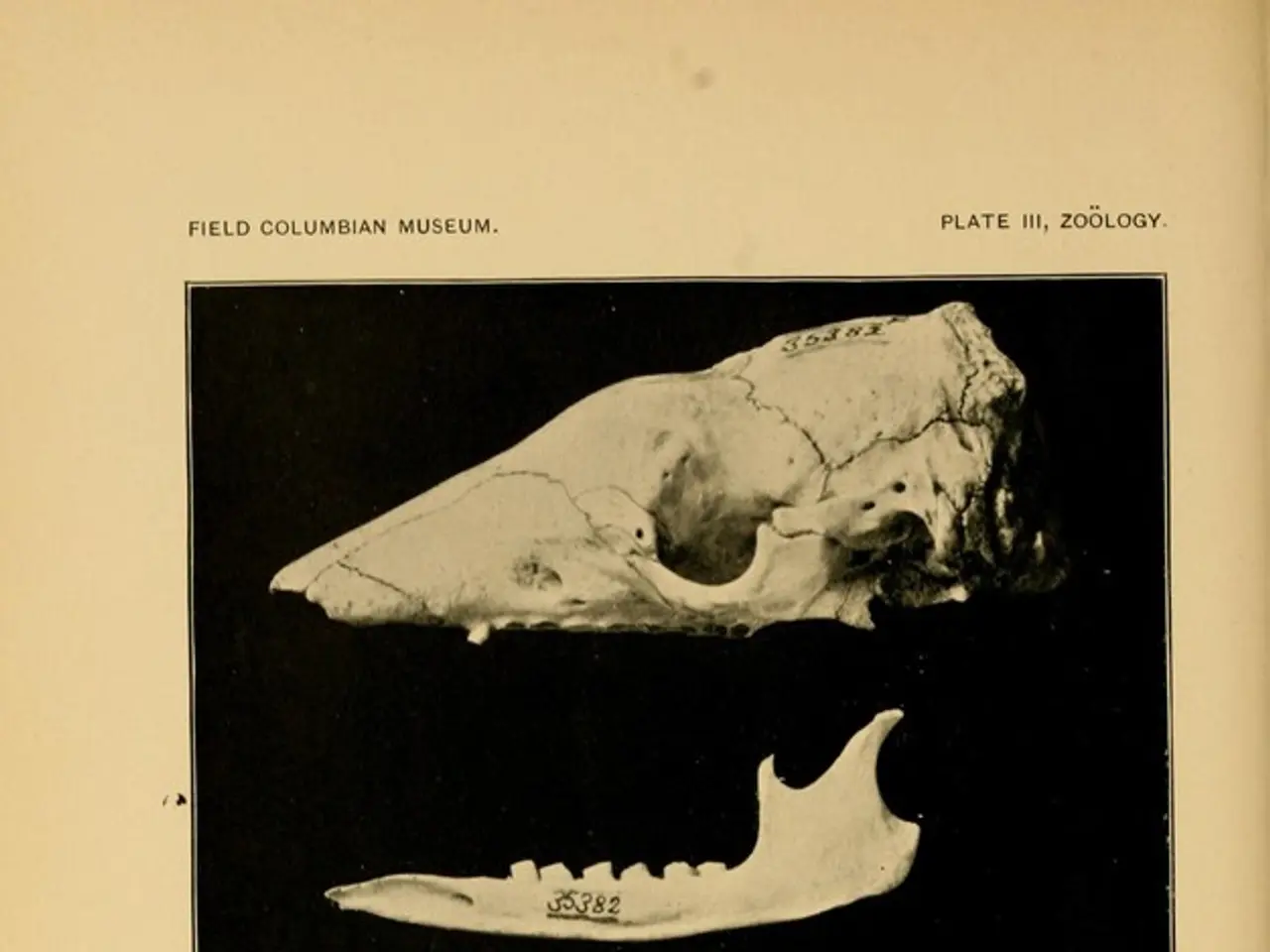Hip Transient Osteoporosis: Identifying Symptoms and Underlying Causes
Pregnant women, particularly those in their third trimester and postpartum period, are at a higher risk of developing Transient Osteoporosis of the Hip (TOH), a condition characterized by sudden onset hip pain and limited mobility [1][2].
Symptoms
The primary symptoms of TOH include sudden, localized hip pain, often sharp and worsening with weight-bearing. Affected individuals may also experience reduced hip joint mobility and difficulty walking or standing. The pain typically fatigues with rest and worsens with activity [2][1].
Causes
While the exact cause of TOH is still unknown, it is believed to be linked to ischemia (reduced blood flow) to the femoral head bone, mechanical pressure from an enlarged uterus on hip vasculature during pregnancy, hormonal changes associated with pregnancy and lactation, and possible microtrauma or overuse contributing to transient bone stress [1][2].
Risk Factors
Pregnancy, especially during the third trimester and postpartum period, is a significant risk factor for TOH. Other risk factors include lactation, middle age (though TOH can occur in younger pregnant women), hormonal fluctuations during pregnancy, and possibly increased bone turnover or underlying subtle bone fragility [1][2].
Treatment Options
Treatment for TOH is primarily conservative and supportive, as the condition is self-limiting. Recommendations may include reduced weight-bearing or the use of crutches to avoid fracture risk, pain management with safe analgesics for pregnancy (e.g., acetaminophen), physical therapy to maintain joint function without stressing the hip, and close monitoring with imaging (MRI to assess bone marrow edema and exclude osteonecrosis) [2][1].
In rare complicated cases with fractures, orthopedic intervention may be required.
Prognosis
TOH usually resolves spontaneously within 3 to 6 months postpartum [2][1]. Secondary risk factors for TOH include alcohol consumption, smoking, hypophosphatasia, low testosterone, low vitamin D, certain professions that involve prolonged periods of standing, and osteogenesis imperfecta [1].
Although TOH can be a debilitating condition, the outlook for people who experience it is generally very positive, with the symptoms often resolving within 6-12 months. In rare cases, TOH may recur later in life [1].
Prevention and Management
Preventative measures for TOH are not well-established, but maintaining a healthy lifestyle, including regular exercise, a balanced diet, and adequate vitamin D and calcium intake, may help support overall bone health during pregnancy.
In addition, vitamin D and calcium supplements may be suggested to help promote bone regrowth. Core decompression surgery is an option in cases where medications have been ineffective [1].
In conclusion, TOH in pregnancy is a temporary, but potentially debilitating, condition that affects the femoral head of the hip joint, causing a loss of bone density. Diagnosis relies heavily on clinical suspicion supported by imaging, and treatment is non-invasive, focused on symptom relief and protection of the hip until recovery occurs naturally [1][2][3].
References
- Bhola, V., & Mankin, H. J. (2019). Transient Osteoporosis of the Hip. American Journal of Roentgenology, 212(2), W287-W293.
- Gulati, V., Bhandari, M., & Nguyen, T. D. (2016). Transient Osteoporosis of the Hip. Orthopaedic Clinics of North America, 47(1), 13-20.
- Kim, J. H., & Kim, H. S. (2016). Transient Osteoporosis of the Hip: A Systematic Review. Journal of Orthopaedic Science, 21(6), 1071-1076.
- Maintaining a healthy lifestyle, including regular exercise, a balanced diet, and adequate vitamin D and calcium intake, may help prevent Transient Osteoporosis of the Hip (TOH) in some cases.
- In addition to TOH, pregnant women may also be at risk of developing chronic diseases such as chronic kidney disease, respiratory conditions, and eye health issues, as well as mental health disorders and skin care concerns.
- Adequate nutrition plays a crucial role in overall health, especially for pregnant women, as it supports not only their own health but also the development of their unborn child.
- Pregnant women are at a higher risk of developing chronic conditions like osteoporosis, which can affect the muscles and bones, due to hormonal changes, increased bone turnover, and reduced blood flow to the bones in certain areas during pregnancy.
- Middle age, lactation, and hormonal fluctuations during pregnancy are additional risk factors for TOH, alongside conditions such as hypophosphatasia, low testosterone, and low vitamin D levels.
- In the management of TOH, medical-conditions like chronic kidney disease, chronic diseases, and mental health disorders should be addressed concurrently to ensure holistic health and wellness for the mother and child.
- Fitness and exercise routines, in conjunction with proper nutrition, can help restore bone density and overall health after TOH, reducing the chances of recurrence later in life.




